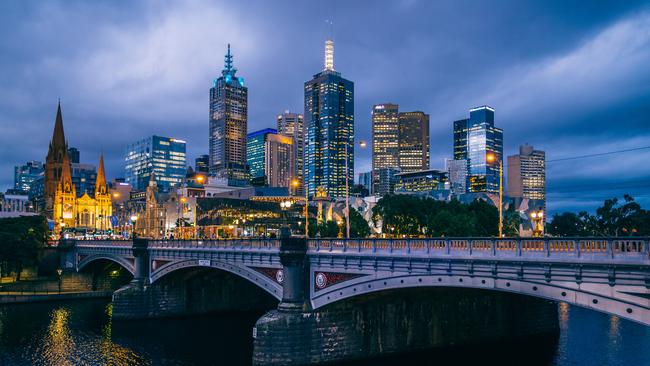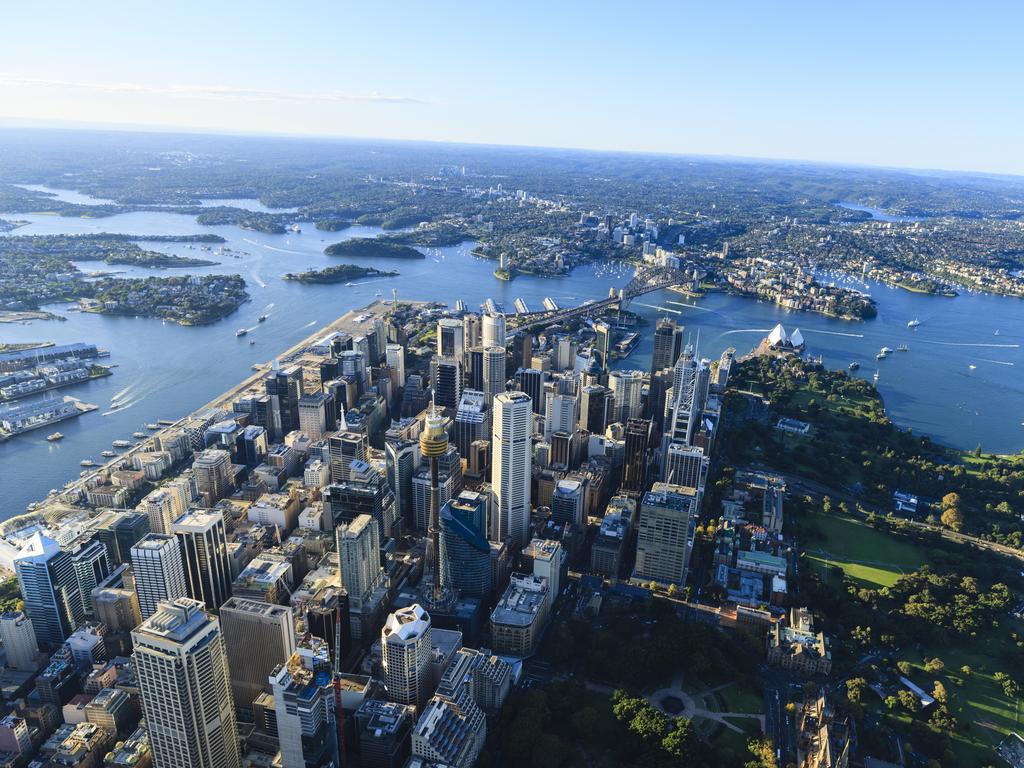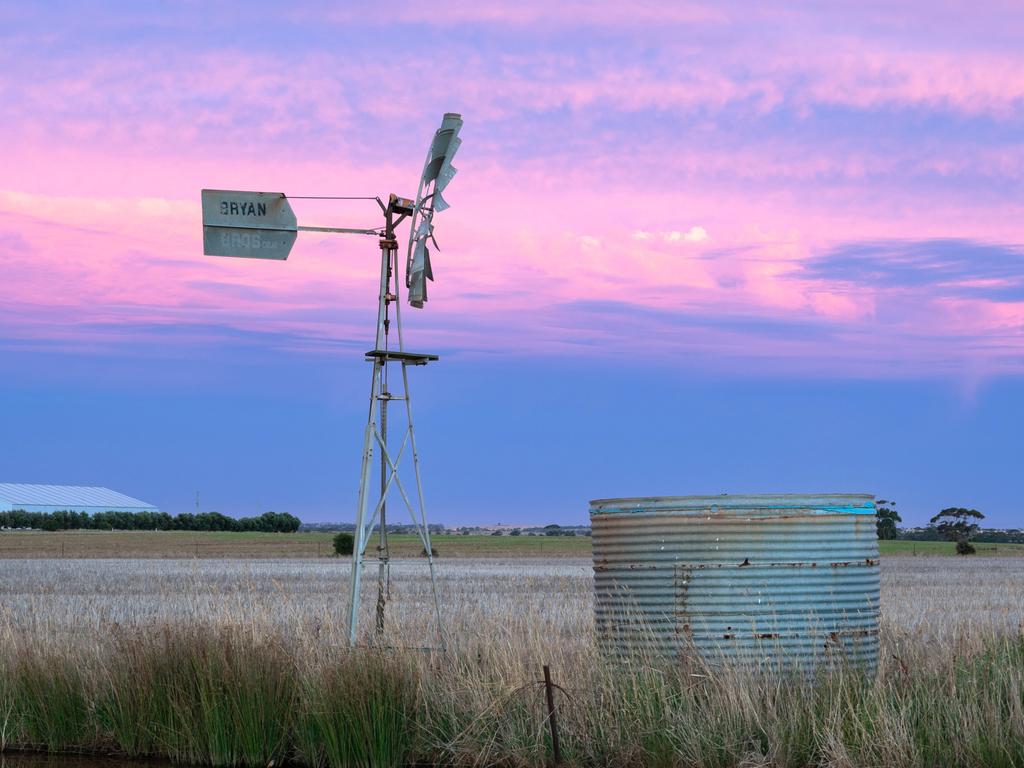Global city outlook: How Australian cities compare
Anyone considering investing in property could do a lot worse than looking locally. We’ve crunched the numbers on the best cities.

And you’re tired of, bored with, can’t quite see the opportunities in, the Australian market.
You’ve been to New York, London, Paris, Hong Kong and you’ve sized up the market.
Indeed, while there you think “I could do this”, when you get home you’re all too quickly subsumed with other matters. But the idea of taking your business, capital, expertise, family to a bigger, more globally connected market never goes away.
What you need is to run the numbers. And that is precisely what I do in this column.
1000 cities with 300,000-plus residents … the UN Population Division does it again
There is one authoritative accessible data source when it comes to world city data and that is the UN Population Division. Every three to four years the UN updates its endlessly fascinating database showing population estimates for the 1000 largest cities on Earth at five-yearly intervals stretching both backwards and forwards in time.
The most recent list was published in 2018; a new list is expected in 2023.
The largest city in our time, and in history, is Tokyo with 37 million residents in 2020. The 1000th largest city is Puerto Rico’s Aguadilla-Isabella-San Sebastion with 300,000 residents. Australia’s five big capitals plus the Gold Coast, Canberra, Newcastle, the Sunshine Coast, Central Coast and Wollongong all make the list.
The Australian figures relate to what the ABS calls the Significant Urban Area which doesn’t include nearby and often connected urban centres such as, for example, the Central Coast which, by other definitions, is included within the estimates for Greater Sydney.
The issue in any global ranking of cities is to ensure there’s a consistent geographic basis upon which an urban centre is defined. I suspect there’s a bit of guesswork in putting this list together, but the value isn’t so much in the technical accuracy of the estimates, rather it’s in the rise and fall and in the ranking of cities. In the attached tables I have accessed data at three points in time: 2005, 2020 and (as projected to) 2035. In other words, I have looked back 15 years in order to look forward 15 years.
So, from a property perspective, which big cities are expected to add most net new residents throughout the 2020s and into the 2030s?
After all, more residents require more housing, shops, offices, warehouses and social infrastructure.
The biggest, the fastest cities on Earth … it’s all about Africa
The largest city on Earth, and thus far in history, is Tokyo with 37 million, followed by Delhi with 30 million and Shanghai with 27 million.
Most growth over the 15 years to 2035 is expected in Delhi, up 13 million. Indeed, Delhi is growing by close to a million net new residents every year. Then comes Kinshasa in the DRC, up 12 million to 27 million by 2035. Kinshasa is now the largest French-speaking city on Earth. Then comes Dhaka in Bangladesh, up 10 million, Lagos with 10 million and Cairo with eight million.
While population growth in these cities might be substantial throughout the 2020s and 2030s, local residents do not have the kind of middle-class prosperity required to demand Western-style housing. Nevertheless, these cities would offer good prospects for growth in demand for fast-moving consumer goods such as, for example, nappies, toothpaste, laundry detergent and, sadly, probably tobacco too.
Some 12 global cities with a current population of more than 300,000 are projected to double over the next 15 years including Tanzania’s Dar es Salaam, up seven million from seven million today. Uganda’s Kampala is expected to rise from three million to seven million by 2035.
These cities will require sewerage, power and transportation infrastructure as well as schools and hospitals during the 2020s.
The vast majority of fast-growing cities over the next 15 years are located in Africa.
Interestingly the UN also places Kandahar, Afghanistan, in the high-growth category, rising from 500,000 in 2020 to 800,000 in 2035, although these estimates were made before the recent regime change.
Closer to home the UN has Port Moresby growing from 382,000 in 2020 to 603,000 in 2035. In Indonesia the city of Batam (near Singapore) is expected to rise from 1.5 million to 2.2 million over this time frame.
Strong growth over the next 15 years is also projected for cities in Iraq (Diwaniyah up 58 per cent), India (Hosur up 68 per cent), Nepal (Pokhara 62 per cent) and Vietnam (Thu Dau Mot up 60 per cent).
Fast-growing Western car-based cities … US and AU dominate
Fast growth is also projected for some Western car-based cities such as The Woodlands (commuter township north of Houston), up 43 per cent to 817,000 residents by 2035.
The urban centre of Temecula-Murrieta south of Riverside in the San Bernadino Valley is expected to jump from 848,000 residents in 2020 to 1.1 million by 2035. This growth converts to an average of 19,000 net extra residents every year which outpaces the annual rate of growth in, for example, Melbourne’s City of Wyndham (generally about 10,000).
South Carolina offers a US seachange experience at Myrtle Beach which is expected to rise from 377,000 residents to 492,000 by 2035. These figures are roughly proportionate to the Sunshine Coast which is expected to jump from 346,000 to 422,000 by 2035. So, tired of the Sunny Coast? Then head to Myrtle Beach!
Just across the border in North Carolina is Fayetteville with 504,000 residents today, rising to 653,000 by 2035. This converts to a growth rate of around 10,000 per year which is roughly equivalent to the kind of growth levels experienced on the edges of Sydney, Melbourne and Brisbane. Fayetteville is driven by a particularly strong military presence (ie Fort Bragg) giving it income stability.
On the southern edge of Greater Orlando, Kissimmee is growing at an average rate of 10,000 net new residents every year.
But the property opportunities in the US don’t stop at Kissimmee. Strong growth is also expected in Charlotte NC, Victorville CA, Raleigh NC, Cape Coral FL, Provo-Orem UT, Santa Clarita CA, Austin TX, Lancaster CA and Las Vegas NV, all projected to grow by 23 per cent or more over the next 15 years.
But then comes Melbourne, Australia, rising from five million (SUA definition) in 2020 to 6.1 million by 2035, which shows a net increase of 1.1 million or 22 per cent over this period.
No Western car-based city, according to estimates prepared by the UN, offers the prospect of more growth off a higher base than does Melbourne.
Sure, there’s spectacular growth projected for The Woodlands, for Temecula and for Myrtle Beach but this is off a current population base of 400,000-800,000. Even Las Vegas and Charlotte are more akin to a Brisbane scale (2-3 million) and so are not directly comparable with the scale of the property market in Melbourne.
Other world cities pale in comparison. Over the 15 years to 2035 Paris will increase from 11 million to 12 million, New York from 19 million to 21 million, Los Angeles from 12 million to 14 million, London positively dawdles from 10 million to 11 million, while Toronto grows from six million to seven million.
Where else would you rather be as a property developer and investor? How about Japan?
Greater Tokyo is expected to contract from 37 million to 36 million by 2035. Nagasaki is projected to shrink at a rate of 1 per cent per year over the next 15 years.
Surely this can’t be good for the local property industry. Can we expect more Japanese property players looking to Australia for opportunity?
Conclusion … it’s not all about population growth
The conclusion I have come to is that it is only Australia and the US that offer the property industry scope for Western car-based residential development.
And this is of course in addition to the heightened demand that flows from the development of transport, social and public infrastructure in the fastest-growing (big) cities in the US and Australia.
In fact, from a property perspective, Australia really is a bit like a well-removed Texas, a way down-under South Carolina, a Pacific-separated Los Angeles, an Oceanic Orlando – minus New York, of course.
The other point I would make is that large European cities appear close to maxing out in terms of projected population growth.
Property opportunities in the short to medium term will be largely confined to infrastructure improvements and to the development of commercial real estate.
Sure, there’s scope for some residential and especially niche (upscale) apartment projects (e.g. opposite London’s Hyde Park is nice) but there simply isn’t the large-scale suburban growth opportunities that are available in the US and Australia.
But there is another insight that is hidden deep within these figures. and that is that London and Paris will remain just as influential as business centres in 2035 as they are today despite the fact that their population bases are only increasing modestly.
City depth, strength and success in the 2020s and 2030s isn’t so much driven by absolute population growth – although that still seems important in the US and Australia.
It is in the city’s ability to attract skilled labour, business investment and to create a culture (indeed, a persona) of enterprise.
So, even if you don’t intend taking your property business/expertise outside Australia, at the very least this column does provide you with a list of cities to visit next time you’re in the US.
Personally, I’d like to see the scale of a Kinshasa, the pace of Lagos, the contraction of Nagasaki and the dreaminess of Kissimmee.
Bernard Salt is executive director of The Demographics Group; research and data by Hari Hara Priya Kannan






You’re a property developer, investor, tenant, employee and/or a bit of a property player in your property market.